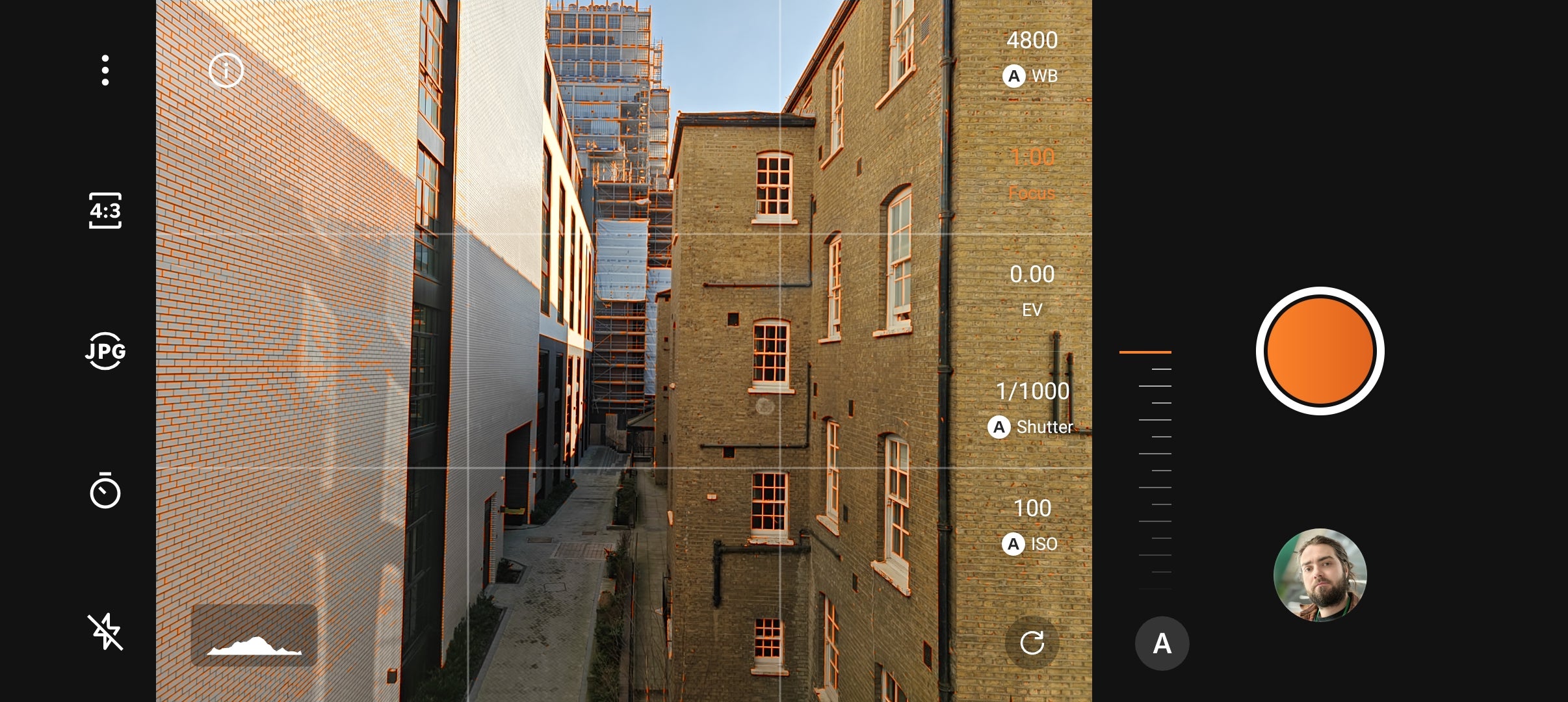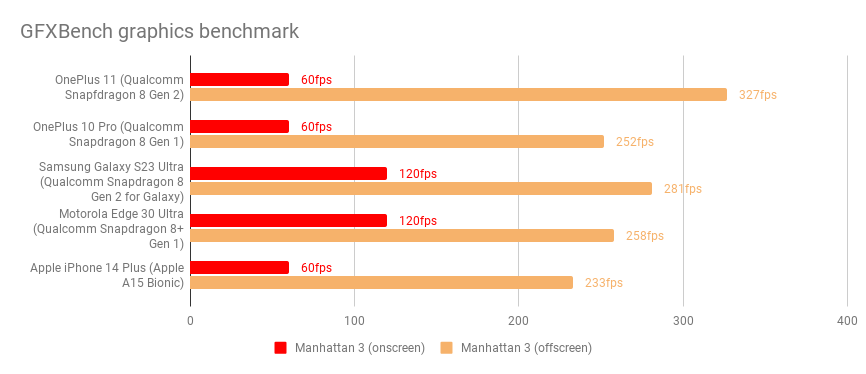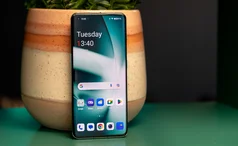OnePlus 11
OnePlus 11 review: Big on value, low on thrills

The OnePlus 11 delivers great all-round performance for almost sensible money
Pros
- Portrait lens works nicely
- IP64 rated
- Great battery life
Cons
- No long telephoto
- Camera misses focus at close range
- Only splashproof
The OnePlus 11 won’t make as much of a splash as the firm’s smartphones have done in the past but, whisper it quietly, it probably deserves to. Although no longer the darling of those in the know, this is a solidly competent smartphone that barely puts a foot wrong.
There’s no headline-grabbing 200MP camera or 100x super zoom – but it’s none the worse for it. The OnePlus 11 trims the luxury fat, keeps the price sensible and serves up great all-round performance, long battery life and a suite of good cameras.
OnePlus 11 review: What you need to know
The OnePlus 11 is the overall flagship for the brand in 2023. This year, says OnePlus, there will be no Pro model. Perhaps a “T” model later in the year to capture those who couldn’t quite stretch to the full OnePlus 11, but nothing to compete with the Samsung Galaxy S23 Ultra or even the Motorola Edge 30 Ultra.
Despite the flagship label, though, the specifications don’t point towards a flagship product. Although OnePlus has revived the Hasselblad partnership for the camera array, there is no telephoto camera here. Instead, you get a main camera, an ultrawide and a portrait lens. Wireless charging is also not on the cards and fast charging has taken a step backwards, with the OnePlus 11 offering slower topping up than the super-rapid OnePlus 10.
READ NEXT: These are the best smartphones money can buy
The rest of the package is pretty standard stuff at this end of the market. The phone has a 6.7in 120Hz LPTO AMOLED display, comes in matte “titan” black or gloss “eternal” green or and in 8GB RAM/128GB storage or 16GB/256GB configurations.
OnePlus 11 review: Price and competition
Prices for the OnePlus 11 start at £729 (8GB, 128GB, black) and rise to £799 (16GB, 256GB, green), a far cry from the sub-£200 of the firm’s original handset way back in 2012. But this is still reasonable for a flagship smartphone in 2023.
Its main rivals are, therefore, pretty much all the big phones that have launched in the past three months: the Google Pixel 7 Pro, the Samsung Galaxy S23 Plus (or the Samsung Galaxy S22 Plus if you don’t mind sticking with last year’s hardware), the Motorola Edge 30 Ultra and the Apple iPhone 14 Plus.
The Google Pixel 7 Pro is probably the OnePlus 11’s biggest competitor, purely because of its price. Although the list price of the lowest specification is £849, you can get hold of it pretty widely for around £720 at the moment and it’s a cracking smartphone, with a 6.7in 120Hz AMOLED display, a 5x telephoto camera alongside a main camera and an ultrawide.

The Samsung Galaxy S23 Plus is more expensive than the OnePlus 11 but, again, beats it when it comes to the camera setup. It has a 2x telephoto to go with its ultrawide and main cameras. It also matches the OnePlus 11’s Snapdragon 8 Gen 2 chipset, although the S23 Plus’ 8 Gen 2 is the “made for Samsung variant”, which is a touch faster.
The Motorola Edge is our current selection at this price point. It comes with last year’s Snapdragon 8 Gen 1 chip but is otherwise a beast of a phone at a very reasonable price. It comes with a similar selection of cameras as the OnePlus 11 – ultrawide, main, 2x telephoto – but its base specification is 12GB of RAM and 256GB of storage and it uses the same 200MP camera as the just-released Samsung Galaxy S23 Ultra.
Finally, there’s the Apple iPhone 14 Plus. It’s a nice enough phone but has only two cameras – ultrawide and main – and uses last year’s A15 Bionic chipset instead of the A16 Bionic used by the iPhone 14 Pro. With 6GB of RAM and 128GB of storage, it costs £949.
READ NEXT: These are the best smartphones money can buy
OnePlus 11 review: Design and new features
Big old camera bumps are all the rage these days and the OnePlus 11’s is a humdinger. It dominates the rear of the phone: a stainless steel ring surrounding the phone’s three cameras and LED flash arranged in a square, and the Hasselblad branding emblazoned across the centre. It’s certainly eye-catching, but there’s something awkward about the way it flows into the frame of the phone and wraps around it.
Still, it’s a better-looking arrangement than on the rather ugly Motorola Edge 30 Ultra and I think it’s slightly neater than the brutish camera bar stretching across the rear of the Google Pixel 7 Pro.

I rather like the way the phone sits in the hand as well. It’s nicely balanced and light at 205g, and the way the screen and rear panel glass curve in to meet each other on either side of the chromed aluminium frame makes it feel less bulky than you’d expect.
On the subject of glass, there’s Gorilla Glass Victus on the front and Gorilla Glass 5 on the rear to protect against scuffs and scratches and, as ever, OnePlus includes a pre-applied screen protector. One thing that’s not immediately apparent from the outside is that this OnePlus actually has an IP64 rating for dust and water resistance.
This isn’t anything special in the overall scheme of things, however – a rating of 4 against water ingress means the phone isn’t protected against submersion, just “water jets from any direction” – and it’s a step behind the OnePlus 10 Pro, which had an IP68 rating. However, it is better than the OnePlus 10T, which had no official rating at all.
Otherwise, it’s traditional OnePlus fare, with the company reintroducing the three-position alert-slider switch after omitting it from the OnePlus 10T. This sits on the right edge around an inch higher than the power button. The volume rocker is on the left edge and the dual 5G SIM tray is on the bottom edge alongside a USB-C port and a single speaker grille. There’s no 3.5mm headphone jack, no microSD card expansion slot and no wireless charging here, although the phone does offer an in-screen fingerprint reader, face unlock and NFC.
OnePlus 11 review: Display
The display is pretty much as you’d expect from a flagship smartphone in 2023. It measures 6.7in across the diagonal, has a resolution of 1,440 x 3,216 and refreshes at up to 120Hz for ultra-smooth scrolling and gameplay, and down to 1Hz so the always-on display doesn’t leach away too much battery capacity while it’s running.
Other notable specifications include HDR10+ and Dolby Vision support, plus sRGB and Display P3 colour gamut support. Peak brightness reaches 1,300cd/m² and, as with all AMOLED displays, its contrast ratio is essentially perfect. It should look good whatever content you’re viewing, in other words.

In testing, it performed admirably but it didn’t pass every challenge with flying colours. I tested every one of the phone’s colour modes – Vivid, Natural, Cinematic and Brilliant – and found that the Natural mode was superbly colour accurate within sRGB, while Cinematic mode offered the best colour accuracy within Display P3. Use the first for browsing the web and standard dynamic range content, the latter for HDR video playback or, if you want the most vibrant colours, pick Brilliant. In this mode, the screen generated 122% of the P3 colour space.
In practice, using this display is largely a great experience but Dolby Vision support does appear to be a little patchy. It works fine on Amazon Prime, for example, but there’s no sign of it on Netflix or Disney+, where only HD formats of popular shows seem to play. That presumably will change in time as OnePlus irons out the bugs, but it’s one to be aware of if you watch a lot of streaming video on your phone.

I was also unable to push peak brightness beyond 700cd/m², no matter what I did. I played an HDR file with a white window set to 10%, turned auto brightness on and off and beamed a torch at the brightness sensor and toggled between all the various colour modes. It is possible to reach the 1,300cd/m² brightness according to OnePlus, but you’d need to display a 1% white patch against a black background, with auto brightness enabled and a bright torch shining on the light sensor to get it there. Notably, Dolby Vision peak brightness is only rated at 800cd/m² and you’ll only see up to 500cd/m² while watching HDR10+ material.
All this is, admittedly, a little academic. The screen is perfectly readable in the brightest of ambient light at these levels of brightness and whether HDR or Dolby Vision is enabled or not, streaming TV and movies on the screen look superb on it.
READ NEXT: Our pick of the best phone cameras
OnePlus 11 review: Cameras
If it’s a mixed report for the display, the cameras are much more impressive, particularly the camera that is supposed to be the star of the show: the so-called portrait module, which is actually simply a 2x telephoto. This shoots images at 32MP with an aperture of f/2.8 and, when it works, it captures pleasing portraits with subjects cleanly cut from the background and a creamy smooth bokeh.
Use the Serenity Hasselblad Masters filter and the look is even more impressive, lending each shot a stylised look that’s supposed to ape Yin Chao’s style (a famous Chinese fashion photographer).
I don’t know his work particularly well but portraits captured with it look great. I don’t usually like the self portraits I snap during smartphone testing but the images I captured with the OnePlus 11 were spectacularly good, clearly beating the iPhone 14 Pro Max, especially when it comes to skin tones.

My big gripe with the portrait mode is that, quite often, I found that the camera would miss focus, resulting in an unusably blurry photograph. It doesn’t really like being right up close and personal.
The other big differentiating factor, according to OnePlus, is that the phone has a separate “13-channel multi-spectral” sensor for colour identification for setting white balance and this works across all the rear cameras, including the main 50MP, f/1.8 main camera and the 48MP, f/2.2 ultrawide. It certainly seems to do the trick when it comes to portrait shots and it works for photographs captured in otherwise tricky lighting as well.
In the grass below, the OnePlus 11 captures a far more realistic spread of tones and avoids the over-sharpening that’s present in the iPhone 14 Pro Max shot:

Again, there are some caveats here. You’ll need to be careful when shooting with bright light sources in frame as these cause dramatic and off-putting lens flare. And autofocus is a problem with the main camera as well as the portrait camera. Quite often I found what would have otherwise been quite nice photographs ruined by being too blurry, or with the wrong parts of the photograph in focus. It’s a shame because when it gets focus right, the photographs you can capture with the OnePlus’ main and ultrawide cameras look quite lovely.

Even low light shots aren’t as big a problem as they have been in the past. I’ve compared it here with the iPhone 14 Pro Max as that’s the smartphone camera I know best and, although there’s no competition when comparing shots taken in the Pro Max’s 48MP RAW mode, the OnePlus 11 actually beats the iPhone for regular photo capture, with superior detail, less noise, better HDR and nicer colours.

What’s more, if you don’t mind taking the time to learn your way around the Hasselblad-branded Pro mode, you’ll be able to nail your shot every time by using advanced features such as focus peaking and the onscreen histogram.
As for video, that’s pretty impressive, too, with the ability to capture up to 8K at 24fps stabilised, 4K at up to 60fps stabilised and 1080p at up to 60fps with OnePlus’ Ultra Steady Pro mode enabled. This is something akin to an action-camera-type stabilisation, enabling you to walk or even run while maintaining a rock steady shot.
All in all, while autofocus can be something of a weak point, this is the most impressed I’ve been with a OnePlus smartphone camera for some time.
OnePlus 11 review: Performance
If the camera performance is a surprise, I’m somewhat less surprised by the phone’s general performance. The Qualcomm Snapdragon 8 Gen 1 has produced great performance and impressive battery life in all the phones we’ve tested to date. The Snapdragon Gen 2 inside the OnePlus 11 takes that to another level.
It’s an octa-core chipset with one performance core (a Cortex-X3) running at 3.2GHz, four mid-speed cores at 2.8GHz (Cortex-A715 and A710), and three low power Cortex-A510 cores at 2GHz. The GPU is an Adreno 740 running at a surprisingly low clock frequency of 680MHz and the RAM and storage are now of the faster LPDDR5X and UFS 4.0 types.
The result in pure performance terms is that this is a quicker phone than the iPhone 14 Plus and all of its Snapdragon 8 Gen 1 rivals, but it lags ever so slightly behind the “Made for Samsung” Gen 2 inside the Galaxy S23.


Battery life, too, is very impressive indeed, with a result of 28hrs 9mins in our video rundown test with flight mode engaged and the display set to a brightness of 170cd/m². That’s the seventh best result we’ve had since we started using this test.

And charging speed is rapid: a 100W SuperVOOC charger supplied in the box, coupled with a dual-cell inside the phone, means the OnePlus 11 can hit full charge from empty in as little as 25 minutes or 70% in 15 minutes. That may not quite match the 19 minutes of the OnePlus 10T, but it’s still very good indeed.
OnePlus 11 review: Verdict
All of this adds up to a surprisingly good showing for the OnePlus 11. The design will divide opinion but its capabilities are actually pretty impressive. It’s only very slightly slower than the Samsung Galaxy S23, the battery life is brilliant, and I like the portrait camera, even if it is just a renamed 2x telephoto.
There are weaknesses. The camera struggles with focus at times, especially up-close portraits, where it tends to miss more than it hits. And, if I’m completely honest, I would find a proper telephoto lens with a 5x optical zoom more useful than the 2x “portrait” camera.
All in all, though, the price of £719 is low enough that it’s hard to find fault with the OnePlus 11. Make no mistake about it, this is an outstandingly good smartphone at a very tempting price.

Read more
ReviewsOnePlus 11: Big on value, low on thrills
Mobile phonesThe OnePlus 11 delivers great all-round performance for almost sensible money



